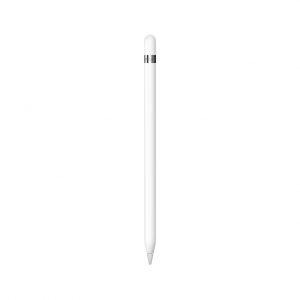Before reading this article “Does handwriting on a tablet screen affect students’ graphomotor execution? A comparison between Grades Two and Nine” by Denis Alamargot and Marie-France Morin (2015), I had to make sure I knew exactly what ‘graphomotor’ meant. I knew it had something to do with motor skills and an output of some kind. Google brought up this definition from https://www.specialeducationalneeds.co.uk/graphomotor-skills.html
“Graphomotor Skills are a combination of cognitive, perceptual and motor skills which enable a person to write. A child with Graphomotor problems will find writing difficult because there is detachment between their thoughts and their ability to express them through writing.”
The beginning of the article reviews studies done to compare the effectiveness of keyboarding and the pros and cons of keyboarding for children. Alamargot and Morin explain how keyboarding is less efficient in three ways:
- it forces the participant to shift between the display and the keyboard
- the writer does not need to form the shape of the letter when using a keyboard and therefore “does not involve any graphomotor processing” (2015) The authors also note other studies which found the action of creating the letters “has an effect on reading as the additional motor encoding that occurs during letter formation has been shown to promote the recognition of these letters, both in kindergarten children (Longcamp, Zerbato-Poudou, & Velay. 2005) and in adults (Longcamp, Boucard, Gilhodes, & Velay. 2006).” (Alamargot and Morin. 2015)
- using a keyboard uses too many of the brain’s resources, by looking for the key, that the child’s writing suffers

Photo by Lucélia Ribeiro CC BY-SA 2.0
The authors go on to explain how handwriting skills are built over time and how one can see the changes as children grow and acquire the control needed to handwrite. They use other studies to establish what the brain does when handwriting. Chartrel and Vinter (2005) discovered that when visual feedback is removed, children return to their propriokinesthetic feedback (how we know or sense our body is moving without looking at the body part). This means that they pushed down harder on the writing instrument, made large letters and write the letters faster. Numerous other studies identified by Alamargot and Morin, detected the differences between proficient adults handwriting on various surfaces (high friction verses low friction) and using a variety of different pen tip types. The results of these studies show how adults have strategies in order to maintain control of the writing instrument while handwriting on different surfaces.
For the experiment, the researchers used a tablet, a Wacom InkPen with no ink and another Wacom InkPen with a ballpoint tip. They also used a piece of paper which was put on top of the tablet. They used Eye and Penâ software to record information about the pen such as where it was and its pressure, as well as the instructions for the experiment and the writing areas. The students were not given a time limit to finish the tasks, which were writing their full name and the alphabet on the tablet and the piece of paper in top of the tablet.

Retrieved from: https://www.wacom.com/en-kr/products/stylus/bamboo-duo
The researchers found that letter legibility “was significantly lower on the screen than on paper.” (Alamargot and Morin, 2015) In all four interest areas, the researchers found that the surface played a large role in the end result. More pen pressure was used when using the plastic tipped pen in both grade two and nine students. Grade nine student applied even more pressure. The letter size increased and the distance that the pen moved was farther on the tablet. The students used the pen faster on the tablet although grade nine students used it faster than the grade two students. Finally, the pauses where greater when using the tablet. Grade two students paused longer than the grade nines. Pausing is when one stops to check the way their writing instrument is moving to correct the formation.
In 2015, this was one of the first studies of its kind. Since then, a variety of tablet pens or styluses are available. The authors suggest other studies would be useful to see if surface textures or different pen tips would benefit students. When I find out that students use a tablet at home, I often suggest they use a stylus instead of their finger. The styluses that I am thinking of are the ones with the rubber ends not the hard-plastic ones. I have never asked a parent which type they use but after reading this article and now understanding the science behind the friction involved in handwriting, I will be suggesting the rubber tipped styluses. Since this study was completed a few years ago, perhaps I will look for newer studies comparing different types of styluses.
This study has made me question my thoughts on practicing printing on the tablet. If students are using more pressure, writing letters faster, their legibility is lower, and the letters are bigger than if they were practicing on paper, is it providing enough benefits to outweigh these negatives? Maybe age is significant? This study was with grade two students who already learned letter formation; most kindergarten students are just beginning to learn letter formation. As a kindergarten teacher, I am looking for the general shape, correct pencil grip, and correct starting point compared to actual legibility. My students are encouraged to go slow for more fine motor control. By the end of kindergarten, I aim for them to know where the letters sit on the line but if they aren’t there yet, that’s okay. Now that I am also teaching grade one, the legibility and position on the line is focused on more frequently. My grade one students don’t need to practice printing on the tablet but is it a skill they will need?
As shown by other studies, adults have greater motor control and can adjust to the textures they are handwriting on. How often do we handwrite on tablet-like technology? Occasionally, I will sign my name for a credit card purchase on a tablet, but I can’t even think of another time I use a tablet to handwrite. My husband, however, uses his tablet almost every time he meets a new client. As a real estate agent, he has numerous contracts and documents that he and his clients need to sign. Before purchasing his tablet, he printed these out on paper resulting in an average use of 23 sheets of paper! Now, he uses an Apple Pencil and stores his documents digitally.
I think that yes, students will need to learn how to handwrite on a tablet or software will have to be created to decode our illegible handwriting and convert it to text. (I believe this is already available but I’m not sure of its ease of use.) Depending on your career choice, you will have more or less opportunity to use handwriting on a tablet. Tablets are engrained in our society now and are becoming more popular than laptops. Perhaps tablet handwriting will eventually become a “basic” tool that we will need to teach regularly or perhaps we will move past handwriting and move toward voice commands, also an increasing technological tool.
References:
Alamargot, D., & Morin, M. (2015). Does handwriting on a tablet screen affect students’ graphomotor execution? A comparison between grades two and nine.Human Movement Science, 44, 32-41.
https://www.specialeducationalneeds.co.uk/graphomotor-skills.html
https://www.apple.com/ca/shop/product/MK0C2AM/A/apple-pencil-1st-generation


Recent Comments